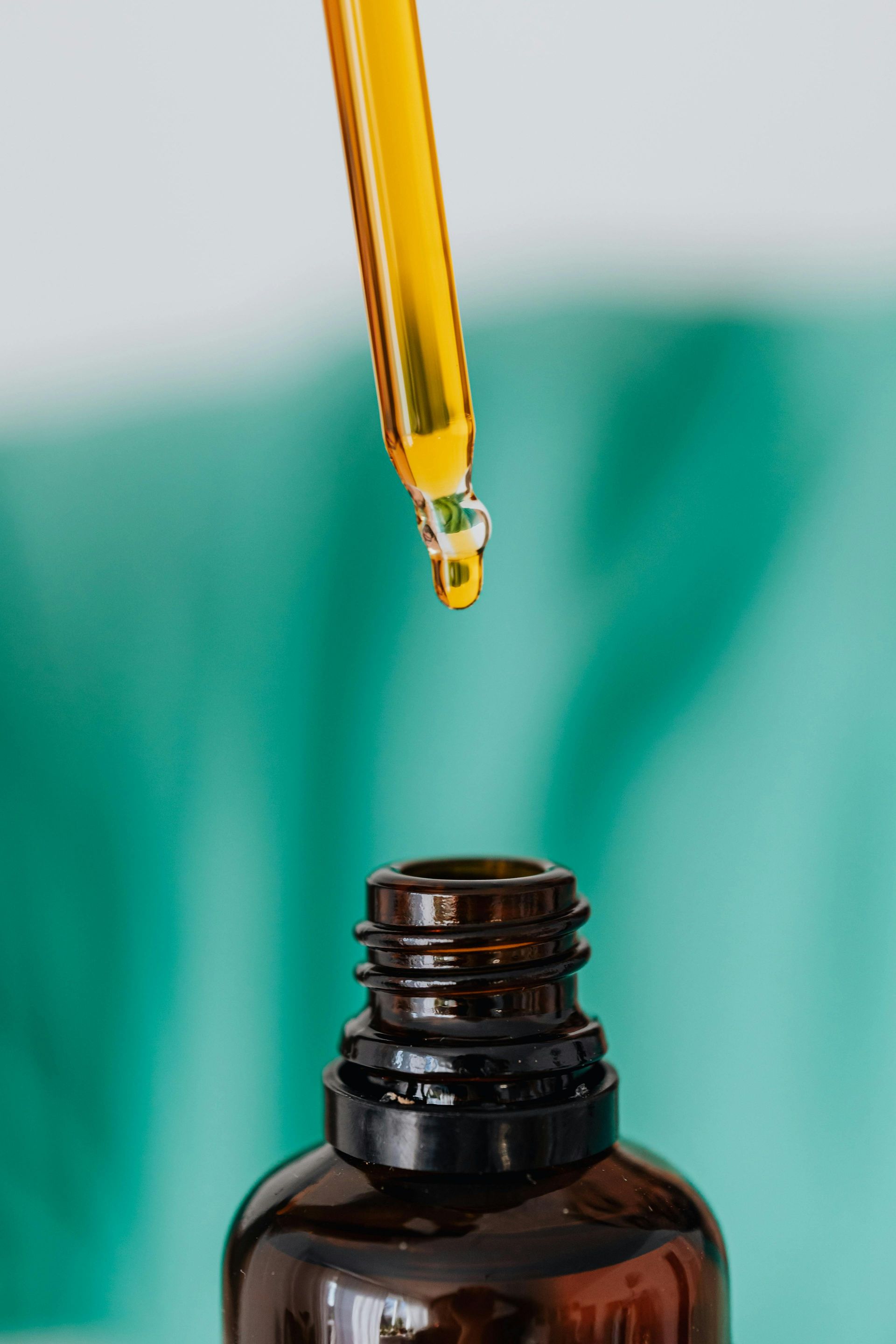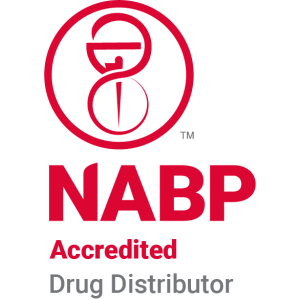Are sterile preparations safe for ophthalmic use?
Sterile preparations for ophthalmic use are critical to the safety and efficacy of eye treatments. Given the eye’s vulnerability to infections and the direct application of these products to sensitive tissues, maintaining sterility is paramount. This article delves into the various aspects of sterile ophthalmic preparations, outlines the stringent regulations and protocols in place, and addresses common concerns about their safety and efficacy.
The Importance of Sterility in Ophthalmic Preparations

Why do ophthalmic preparations need to be sterile?
Ophthalmic preparations require sterility because the eye's mucous membranes are highly susceptible to infections. Contaminated products can lead not only to local ocular infections but also pose severe risks, such as complications that may affect the central nervous system due to the eye's unique anatomical connections.
Manufacturers must adhere strictly to current Good Manufacturing Practice (cGMP) guidelines. These practices emphasize preventing contamination at every stage, starting from the use of sterile water for injection to the production, filling, and sealing processes.
Regulatory guidelines for manufacturing
Regulatory bodies, including the FDA, enforce rigorous standards for the development of ophthalmic drugs. These standards ensure that all components, including raw materials and packaging, are produced under sterile conditions. Packaging must be designed to maintain sterility after it is first opened, reducing the risk of contamination during patient use.
Role of sterile raw materials and packaging
The raw materials used in ophthalmic preparations, like active pharmaceutical ingredients (APIs) and solvents, must be sterile. The quality of these ingredients is paramount to ensure the final product's efficacy and safety. Effective packaging safeguards must also be established, as they protect the product from external contaminants and ensure stability throughout the shelf life.
In summary, the meticulous process of maintaining sterility in manufacturing ophthalmic preparations is critical to safeguarding patient health.
Key Components and Manufacturing Processes

Necessary Ingredients in Sterile Preparations
Ophthalmic preparations must incorporate essential ingredients for patient safety and medication efficacy. The main components include:
- Active Pharmaceutical Ingredient (API) : This is the therapeutic component that provides the intended effect.
- Solvent : Typically, sterile water or buffer solutions are used to dissolve the API, ensuring a vehicle for delivery into the eye.
- Preservatives : Added to multi-dose containers to prevent microbial contamination after the initial seal is broken, common options include Benzalkonium chloride (BAK) , effective but potentially irritating with prolonged use.
Sterility Testing and Aseptic Techniques
Strict adherence to aseptic techniques is crucial in the production of ophthalmic preparations.
- Sterility tests confirm the absence of microbial contamination before the product reaches patients.
- Validated sterilization methods , such as autoclaving for heat-stable solutions or filter sterilization for heat-sensitive formulations, are integral in maintaining sterility throughout the production process.
Packaging and Distribution Considerations
Packaging plays a vital role in the overall safety of ophthalmic preparations.
- Multi-dose containers must be designed to inhibit microbiological growth and minimize contamination risk.
- The environment during the filling and packaging process should be maintained as a cleanroom to prevent contamination. Additionally, following Good Manufacturing Practices (cGMP) ensures regulatory compliance, prioritizing patient safety in every batch produced.
Potential Risks and Challenges

What are the disadvantages of ophthalmic preparations?
The disadvantages of ophthalmic preparations often stem from their inherent characteristics and the risks associated with improper use. Notably, patients may experience blurred vision after application, which can significantly impact compliance with their treatment regimen.
Achieving high bioavailability—how effectively the drug enters systemic circulation—is particularly challenging due to the eye's complex anatomy and its natural defenses that impede absorption. Despite the development of various formulations, such as eye drops, ointments, and gels, these can lead to side effects, including irritation. Frequent applications of conventional formulations may also inconvenience patients.
The role of preservatives
Preservatives play a crucial role in maintaining sterility after the container has been opened, helping to prevent secondary microbial contamination of multi-dose forms. However, some preservatives, such as benzalkonium chloride (BAK), can cause ocular surface toxicity, especially in patients using multiple eye drops regularly.
Common side effects
While ophthalmic preparations are generally safe, they can result in local discomfort and irritation. Long-term use may lead to allergic reactions or hypersensitivity, suggesting that even sterile products are not without risks. Continuous monitoring and adherence to guidelines for proper use are vital to minimize these adverse effects and ensure patient safety.
Preservatives in Ophthalmic Preparations

Importance of preservatives in multi-dose containers
Preservatives play a critical role in ophthalmic preparations, especially in multi-dose containers. They help to prevent microbial contamination once the container is opened. Without these preservatives, the risk of severe ocular infections increases significantly, as multidose products are exposed to air and surfaces that could introduce bacteria.
Potential adverse effects and patient compliance
While preservatives are necessary for safety, they can have side effects. Common preservatives like benzalkonium chloride (BAK) are known to cause ocular surface toxicity, particularly with prolonged exposure. This poses a challenge for patient compliance, especially for individuals who rely on frequent or ongoing treatment. Some may experience discomfort or irritation that discourages consistent use.
Recent recalls related to preservative use
Recent health alerts have highlighted the potential dangers associated with ineffective preservatives in ophthalmic products. Cases such as the EzriCare and Delsam Pharma recalls underscore the real consequences of contamination. These incidents led to serious health risks, exemplifying why stringent regulations surrounding preservatives in ophthalmic preparations are essential for ensuring patient safety.
What are the side effects of sterile eye drops?
The side effects of sterile eye drops, particularly those containing tetrahydrozoline, can include stinging or redness in the eye, widened pupils, and blurred vision. These effects are usually temporary, but if they persist or worsen, it's important to contact a healthcare provider. Tetrahydrozoline works by narrowing blood vessels in the eye to alleviate redness caused by minor irritations such as dust or smoke. More serious side effects may include significant eye pain, worsening redness, or severe allergic reactions, which require immediate medical attention. Always inform your doctor of any allergies before using these medications, especially to preservatives that may be present.
Understanding Isotonicity and Ocular Compatibility

Isotonicity in ophthalmic solutions
Ophthalmic preparations must be isotonic to ensure they do not cause tissue damage or irritation to the sensitive ocular surface.\n\nIf an ophthalmic solution is not isotonic, it can lead to discomfort, inflammation, or even harm to the cornea and other eye tissues. For instance, in studies involving chloramphenicol ophthalmic in situ
gel, formulations were tested for isotonicity, confirming they maintained the integrity of blood cells crucial for safety. This illustrates a significant relationship between isotonicity and ocular health.
\n### Prevention of ocular irritation
The results of these studies indicated zero irritation in animal tests, emphasizing that isotonic preparations are vital in maximizing drug absorption while minimizing loss before penetrating the cornea. Such formulations help maintain both patient comfort and the intended therapeutic efficacy of the medication.\n\n### Safety standards in formulation
In addition to isotonicity, the pH of ophthalmic solutions should ideally range from 6.5 to 8.5. This range is designed to prevent corneal damage and ensure compatibility with the eye’s physiological environment. Adhering to these safety standards helps reduce the risk of adverse reactions and enhances overall patient outcomes during treatment.
Manufacturing Standards and Regulatory Compliance
Compliance with FDA and USP Guidelines
Ophthalmic preparations are subject to rigorous standards imposed by the FDA and the U.S. Pharmacopeia (USP). The Federal Food, Drug, and Cosmetic Act mandates that these products remain sterile, given their direct application to sensitive ocular tissues. Non-sterile ophthalmic products are classified as adulterated, highlighting the need for compliance to ensure patient safety.
The USP guidelines further emphasize the necessity for manufacturers to adhere to established good manufacturing practices (GMP). Consistent application of these standards helps validate the efficacy of sterilization techniques and ensures that every step of the manufacturing process prioritizes sterility.
Impact of Regulation on Product Safety
Regulatory compliance significantly influences the safety profile of ophthalmic products. Stricter oversight has resulted from recent recalls, particularly those linked to contamination risks from products like EzriCare and Delsam Pharma. By enforcing guidelines that mandate sterility testing and appropriate packaging, health authorities are working to prevent serious ocular infections and safeguard consumers from potentially harmful products.
Role of cGMP in Ophthalmic Preparations
Current Good Manufacturing Practice (cGMP) plays a vital role in the preparation of ophthalmic medications. These practices ensure that every manufactured batch is tested for sterility and that proper aseptic techniques are observed. This compliance not only reduces the risk of contamination but also ensures that the formulations maintain their therapeutic efficacy and safety over time. With stringent cGMP adherence, the integrity and quality of ophthalmic preparations can be confidently ensured.
Addressing Contamination Risks
Environmental Monitoring During Manufacturing
To mitigate contamination risks, strict environmental monitoring during the manufacturing of ophthalmic preparations is essential. Manufacturers must maintain a cleanroom environment, meaning that the filling and packaging processes take place in controlled conditions to prevent exposure to microbial contaminants. Continuous environmental assessments ensure that air quality and surfaces meet the requisite standards for sterility.
Impact of Contamination on Patient Health
Contaminated ophthalmic solutions can lead to serious health repercussions, such as ocular infections, which may result in complications like vision loss or even blindness. Given that these products are applied directly to sensitive eye tissues, even minor contamination can pose a significant risk, emphasizing the critical nature of maintaining sterility throughout production.
Steps to Prevent Contamination
Several steps can be taken to prevent contamination in ophthalmic preparations:
- Sterile Filtration: Use of sterile filters during manufacturing to eliminate microorganisms.
- Aseptic Techniques: Employing strict aseptic practices during compounding.
- Validation of Packaging: Ensuring that container closure systems are validated for sterility maintenance.
- Use of Preservatives: Incorporating preservatives, especially in multi-dose containers, to inhibit microbial growth after opening.
These measures, highlighted by regulatory bodies like the FDA, underscore the importance of ensuring product safety throughout the manufacturing process.
Patient Safety and Instructions for Use
Proper Use to Ensure Sterility
Patients must handle ophthalmic preparations with care to maintain their sterility. It is crucial to avoid any contact between the tip of the container and surfaces that may harbor contaminants, including hands, eyes, and skin. Additionally, sealing the container immediately after each use helps reduce the risk of contamination.
Common User Errors and Precautions
Many users inadvertently compromise the sterility of eye drops or ointments. Common errors include storing these products in humid environments like bathrooms or kitchens, where temperature fluctuations may occur. Patients should also ensure that the medication is stored in a cool, dark area away from direct sunlight, which helps to maintain the preparation’s integrity.
Patient Compliance and Education
Educating patients about adhering to the prescribed dosage and following instructions for administration is essential for maximizing treatment efficacy. This education should cover potential adverse effects and the importance of reporting any unexpected reactions to a healthcare provider. Overall, ensuring safe usage of ophthalmic preparations not only safeguards patient health but also enhances the therapeutic outcomes.
Role of Antiseptics and Preoperative Care
Use of Povidone-Iodine in Surgeries
Povidone-iodine is recognized as the most effective antiseptic for preparing the ocular surface before surgery. Its use significantly reduces bacterial counts, thereby minimizing the risk of endophthalmitis, a serious infection that can occur post-surgery. Clinical studies have established that applying a 5% povidone-iodine solution in the conjunctival fornix is the current standard for effective preoperative management in ocular procedures.
Alternatives for Patients with Iodine Allergies
For patients who are allergic to iodine, aqueous chlorhexidine 0.05% offers an alternative antiseptic solution. While chlorhexidine is not as extensively studied for postoperative infection prophylaxis as povidone-iodine, it can be considered a viable option in managing preoperative antisepsis in these sensitive cases.
Preoperative Antisepsis Protocols
Establishing strict preoperative antisepsis protocols is critical for minimizing infection risks during ocular surgeries. These protocols include the application of povidone-iodine as a routine measure to ensure the ocular surface is free from harmful microorganisms. This practice is widely supported in surgical protocols and forms a crucial part of the overall strategy to ensure patient safety and optimal surgical outcomes.
Packaging and Storage Considerations
Importance of Container Closure Systems
Container closure systems (CCS) are vital in the packaging of ophthalmic preparations. These systems ensure that the product remains sterile after the initial seal is broken. Multi-dose containers must minimize contamination risks, which is why they often include preservatives that protect against microbial growth. Furthermore, validated packaging establishes a barrier against environmental contaminants, essential for patient safety.
Effects of Improper Storage Conditions
Improper storage can dramatically affect the integrity of ophthalmic products. These preparations should be kept in clean, cool areas, away from humidity and extreme temperatures. Locations like bathrooms or kitchens are typically avoided due to high humidity levels. If stored incorrectly, the solutions may degrade or become contaminated, leading to potential health risks, including infections or adverse reactions.
Ensuring Product Quality and Sterility
Maintaining product quality is paramount for any ophthalmic preparation. Sterility is secured not only through the manufacturing process but also by adhering to guidelines for handling and storage. Regular quality management and monitoring are necessary to confirm that products remain safe for use throughout their shelf life. This ensures that patients receive effective and reliable treatments, safeguarding against the severe consequences that contaminated preparations can cause.
Recent Itinerary in Ophthalmic Sterility
Impact of Recent Recalls on Industry Practices
The recent recalls involving EzriCare and Delsam Pharma due to contamination with antibiotic-resistant bacteria have dramatically highlighted the critical need for sterility in ophthalmic preparations. These incidents have instigated a national conversation about the integrity of the manufacturing processes and oversight, especially for products that potentially bypass some natural bodily defenses through direct application to the eyes.
Lessons Learned from Safety Breaches
Such safety breaches expose the grave health risks associated with non-sterile ophthalmic solutions. Contamination can result in serious consequences, including ocular infections that may lead to permanent vision loss. As a result, the FDA and other health regulatory bodies are emphasizing the importance of stringent quality control and aseptic techniques during the compounding of ophthalmic products.
Future Initiatives to Improve Safety
Looking forward, the industry is enacting several initiatives to enhance safety protocols. These include improved training for pharmacists on compounding practices, rigorous testing of sterility, and better quality assurance measures to prevent future outbreaks of contamination. Adopting enhanced packaging standards will also play a key role in maintaining sterility once the products are opened, aiming to restore confidence in ophthalmic medications.
| Topic | Action Plan | Focus Area |
|---|---|---|
| Recent Recalls | Implement strict manufacturing oversight | Quality Control |
| Lessons from Breaches | Strengthen testing and aseptic techniques | Safety Assurance |
| Future Initiatives | Enhance training and packaging standards | Public Trust |
Sterility: A Pillar of Ophthalmic Safety
Sterile preparations are the cornerstone of safe and effective ophthalmic treatments, crucial for protecting patient health and preserving vision. The stringent manufacturing and packaging protocols, alongside rigorous regulatory compliance, reinforce the safety of these products. While challenges remain, ongoing advancements and vigilant oversight continue to promote safe usage and patient peace of mind.
References
- CFR - Code of Federal Regulations Title 21 - FDA
- [PDF] ASHP Guidelines on Pharmacy-Prepared Ophthalmic Products
- Local production of eye drops in the hospital or pharmacy setting
- Eye care/ Ophthalmic preparations - Esco Pharma
- Ophthalmic Preparation - an overview | ScienceDirect Topics
- Unique Manufacturing Challenges Associated with Sterile Eye ...
- [PDF] Addressing Challenges Of Sterile Ophthalmic Product Filling













